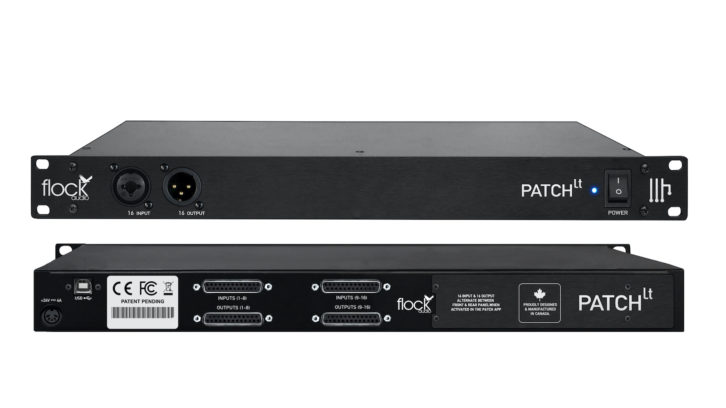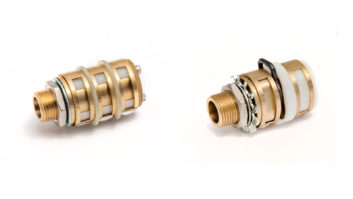
In 2018, Flock Audio released Patch, a digitally controlled patching and routing system for outboard hardware featuring a 100-percent analog signal path. Patch, which you control with a software application of the same name, provides 64 total patch points and lists for just under $3,000.
The company’s next release, Patch LT, is functionally the same as Patch but has half the I/O and sells for $1,000 less. Flock Audio recently released Patch XT, which offers 192 patch points and is considerably more expensive. This review will focus on the most affordable of the three, Patch LT, but is relevant to the other two Patch models.
The concept behind Patch LT is straightforward. You plug all of your outboard gear into its I/O and connect the unit to a computer over USB. The USB connection strictly carries data for the included Patch software, which controls the routing in the Patch hardware.
The Patch LT hardware unit has no physical controls other than the power switch on the front panel. Power comes through a 24VDC power supply that connects securely to a port on the back panel via a threaded locking sleeve. A USB-B host connector (USB 2.0) on the back links Patch LT to your computer.
All of the analog I/O, except for two front-panel XLR ports, are on four rear-panel DB25/D-SUB connectors (Tascam 25 Pinout Wiring Standard) representing Inputs 1-8 and 9-16, and Outputs 1-8 and 9-16.
Crane Song Interstellar Quantum A/D Converter – A Real-World Review
Universal Audio Spark – A Real-World Review
Before configuring Routings for the first time, you must open the Hardware Setup Menu in the Patch software and configure the inputs and output numbers of all the gear you’ve connected. The menu features several modifiers that alter how each piece of equipment is displayed and functions.
One of those is the Lock icon. In its default locked state, it links the input and output of a connected device and shows it as a single Digital Rack Space in the Hardware Index rather than separate ones for input and output. For signal processors especially, that’s what you want. The signal comes in, gets processed and goes out. If you unlock a device, its input and output show up as separate Digital Rack Spaces, giving you the flexibility to place other processors in between them.
For a stereo device, you can use the Pairing option to designate it as a stereo pair, in which case Patch would represent its stereo input and output as a single space in the grid (which Flock refers to as a Digital Rack Space). The pairing function is convenient for setting up a signal chain for master or other stereo bus processing.
You activate Patch LT’s front-panel XLR input and output from the Hardware Setup Menu. Once you do, they take the place of Input and Output 16 connected via DB25. The front panel XLRs are handy in a couple of ways. Primarily, they make it convenient to connect a device that’s not part of your regular setup. You can also use the input to plug in a microphone or Hi-Z instrument and configure it in the software as the first item in a Path.
The Patch software lets you create routings in what’s called the Active Routings Grid. It features up to 16 columns, each of which can contain a separate signal chain, which Flock Audio refers to as a Path. Depending on how you’ve configured your gear in the Hardware Setup Menu, each column can be mono or stereo.
A Path can contain as many devices as you’ve connected in the system. The signal flows from the top to the bottom of each column. Once you’ve configured your devices in the Hardware Setup Menu, you can drag them from a list (the Hardware Index) on the far left into the Active Routings Grid in the order you want. Changing the order of a device in a Path can be done via drag-and-drop. What’s more, each Digital Rack Space has an arrow to its right that allows you to mult the signal into the adjacent Path at that point.
Any Routings that you’ve created can be saved for later recall using the Stored Routings Menu.
It took me a little while to get my mind around the various setup options in the Patch system, but once I did, I found it to be amazingly powerful. With all of your gear connected, Patch LT provides impressive flexibility for integrating your hardware with your DAW.
The more hardware you have, the more valuable Patch will be because it opens up a whole new level of routing and processing flexibility. Whichever model of Patch hardware you purchase, you’ll be getting an innovative system that will make your studio significantly more efficient and powerful.







